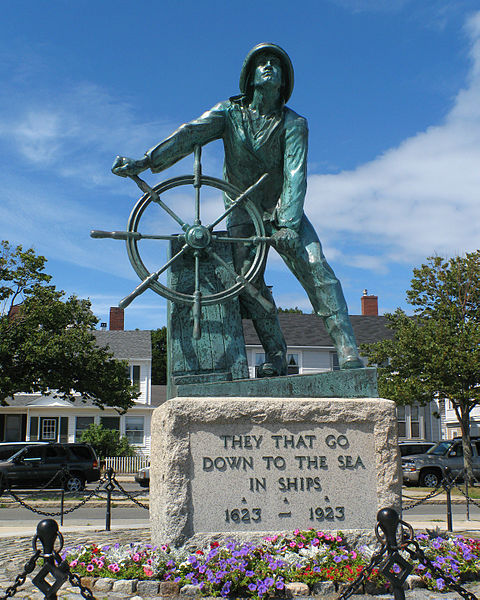A helmsman, helm, or quartermaster is a person who steers a ship, sailboat, submarine, other type of maritime vessel, or spacecraft. The rank and seniority of the helmsman may vary: on small vessels such as fishing vessels and yachts, the functions of the helmsman are combined with that of the skipper; on larger vessels, there is a separate officer of the watch who is responsible for the safe navigation of the ship and gives orders to the helmsman, who physically steers the ship in accordance with those orders.
The bridge of the freighter shown here has two steering stands. This redundancy is a safety measure in case one of the steering mechanisms that control the ship's rudder fails.
Navy sailors at the helm of an aircraft carrier in December 2001.
A ship bridge simulator with 3-D graphics creates scenarios with realistic sights and sounds to train mariners in ship handling.
Underway replenishment during which an oil tanker refuels ships at sea demands that the helmsman steer an extremely precise course.
A ship's wheel or boat's wheel is a device used aboard a water vessel to steer that vessel and control its course. Together with the rest of the steering mechanism, it forms part of the helm. It is connected to a mechanical, electric servo, or hydraulic system which alters the horizontal angle of the vessel's rudder relative to its hull. In some modern ships the wheel is replaced with a simple toggle that remotely controls an electro-mechanical or electro-hydraulic drive for the rudder, with a rudder position indicator presenting feedback to the helmsman.
Iconic image of a helmsman at a ship's wheel: the Gloucester Fisherman's Memorial.
Helm of TS Golden Bear
Britannia Yacht Club's Commodore Boardroom features a ship's wheel table
USS LST-325 ship's wheel and engine order telegraph








